Extinguishing technology in action: fighting wildfires
Thanks to preventive fire protection, typical residential fires are declining, while at the same time, climate change is exacerbating prolonged droughts in the natural environment. As a result, the danger of forest and vegetation fires increases more and more. These types of fires have always existed, of course, and in certain regions of the world, annual "fire seasons" are nothing unusual. However, it can be observed that the forest fire season is getting longer from year to year and the fires are getting more and more intensive.
The global impact of these wildfires is substantial. Beyond the destruction of forests, air quality deteriorates significantly, and large quantities of carbon emissions are released, further exacerbating climate change. This phenomenon, known as the "fire-climate feedback loop", intensifies the cycle of climate change. (For more information, visit: WRI)
About the author
Tristan Reitz
Dipl.-Ing. (FH), Market Manager Fire Service and Mobile Fire Protection at FireDos
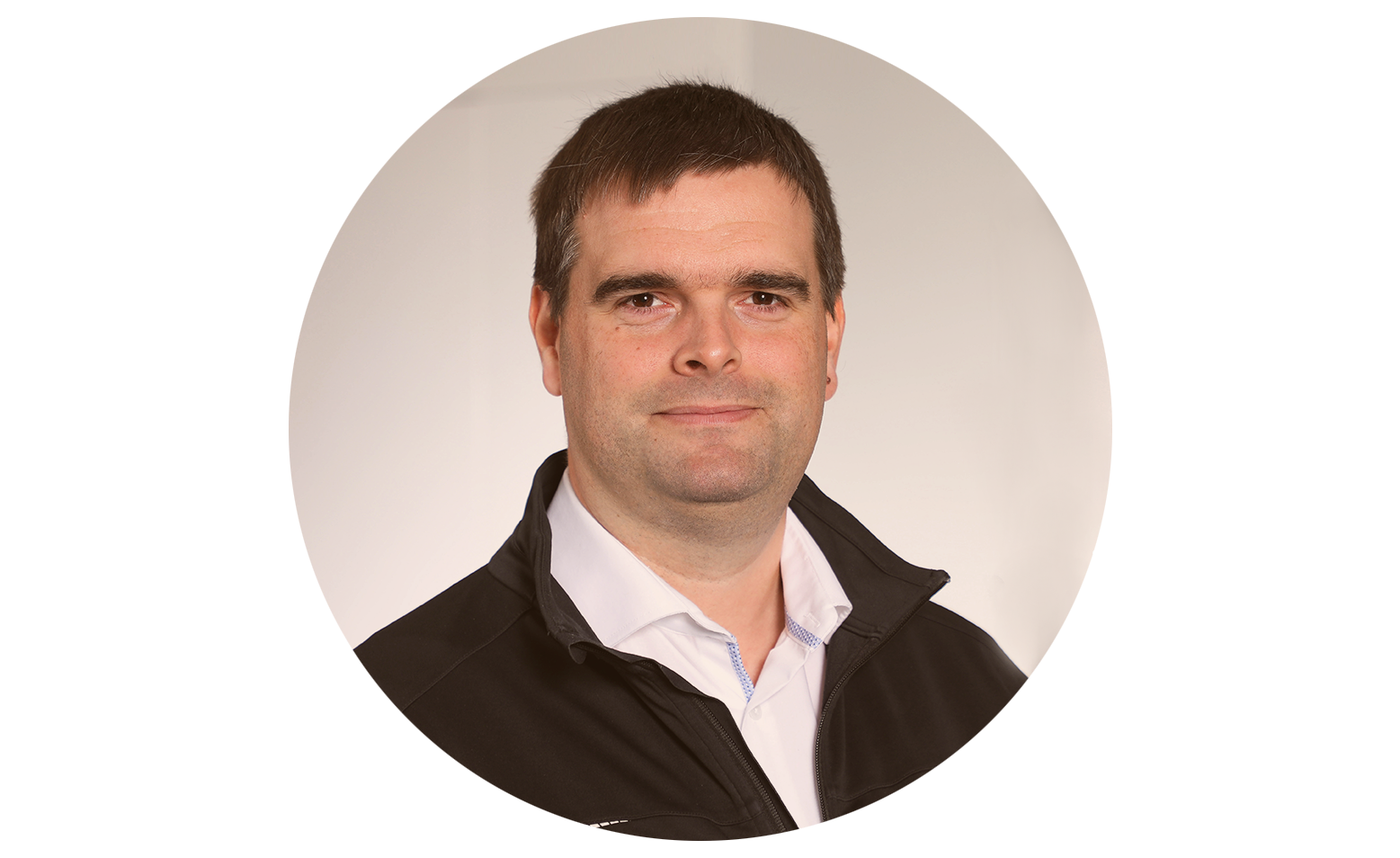
Tristan Reitz
What can be done against vegetation fires?
Preventive measures are crucial in managing vegetation fires. This involves ensuring that forest fires do not start in the first place or do not escalate into large wildfires. Key strategies include removing easily combustible, dry undergrowth, thinning out dense forests, and creating firebreaks.
Technology plays a critical role in the early detection and control of forest fires:
- Early Detection Systems: Using drones, satellites, and specialized sensors to monitor and detect fires at an early stage helps in localizing and containing them swiftly.
- Firefighting Technologies: Improving firefighting equipment and methods is essential. Effective extinguishing techniques aim to fight vegetation fires quickly with as little water as possible in order to minimize the impact on the environment.
Requirements of mobile firefighting technology for wildfires
In many cases, the technology and tactics are mainly designed for fighting fires in urban areas. The flame front of forest and vegetation fires, however, usually does not run along well-prepared roads including water mains and hydrant networks, but off-road on field, forest and farm tracks with a wide variety of topography.
A forest or vegetation fire that extends over several acres brings its own rules with regard to spreading speed, temperature, wind strength and direction. Fighting and containing such fires requires a high degree of mobility.
Mobility is a crucial factor in firefighting. Emergency vehicles must be robust and equipped with the right technology to combat fires effectively. The use of extinguishing robots equipped with fire monitors, such as the M2 from FireDos (Extinguishing robot Magirus Wolf R1), protects and relieves the burden on emergency personnel.
In forest and vegetation fires away from urban infrastructure, water is a valuable good resource that must be used in a targeted and economical way. In this case, economical means a maximum water delivery of between 25-50 gpm, delivered in bursts. This amount of water corresponds to approx. a single ¾ to 1” nozzle.
Using a so-called ‘wetting agent’ instead of pure water can increase extinguishing efficiency by up to 100%. To precisely and reliably maintain the low proportioning rate of the biodegradable foam concentrate, suitable proportioning systems are required. Portable systems like the DZ1000 or the new DZ1000 light from FireDos are designed for this purpose.
Requirements of mobile firefighting technology for wildfires
In many cases, the technology and tactics are mainly designed for fighting fires in urban areas. The flame front of forest and vegetation fires, however, usually does not run along well-prepared roads including water mains and hydrant networks, but off-road on field, forest and farm tracks with a wide variety of topography.
A forest or vegetation fire that extends over several hectares brings its own rules with regard to spreading speed, temperature, wind strength and direction. Fighting and containing such fires requires a high degree of mobility.
Mobility is a crucial factor in firefighting. Emergency vehicles must be robust and equipped with the right technology to combat fires effectively. The use of extinguishing robots equipped with fire monitors, such as the M2 from FireDos (Extinguishing robot Magirus Wolf R1), protects and relieves the burden on emergency personnel.
In forest and vegetation fires away from urban infrastructure, water is a valuable good resource that must be used in a targeted and economical way. In this case, economical means a maximum water delivery of between 25 - 50 l/min, delivered in bursts. This amount of water corresponds to approx. two D-size hollow jet pipes.
Using a so-called ‘wetting agent’ instead of pure water can increase extinguishing efficiency by up to 100%. To precisely and reliably maintain the low proportioning rate of the biodegradable foam concentrate, suitable proportioning systems are required. Portable systems like the DZ1000 or the new DZ1000 light from FireDos are designed for this purpose.
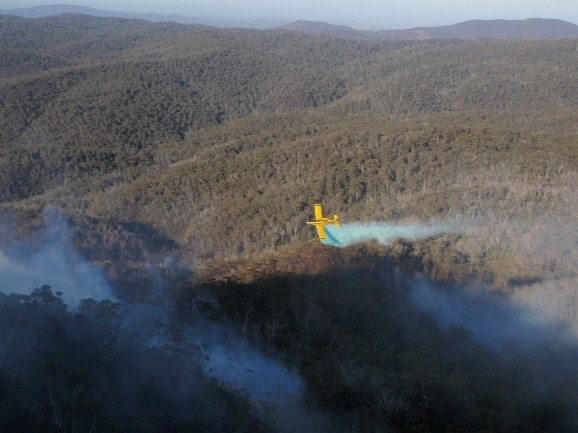
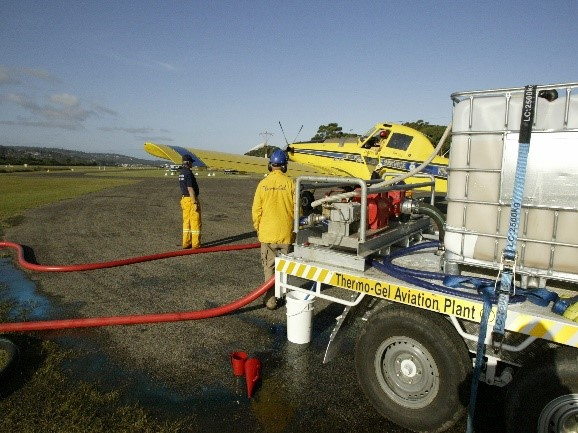
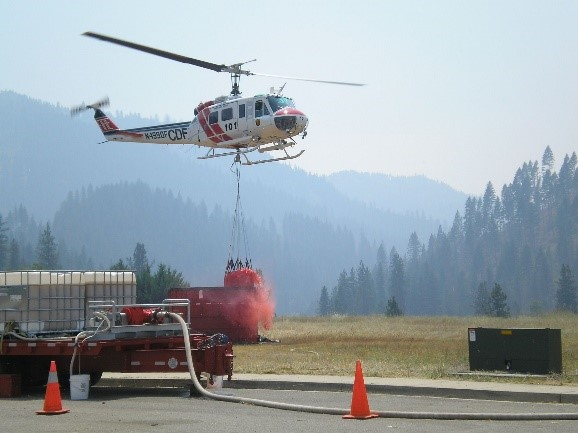
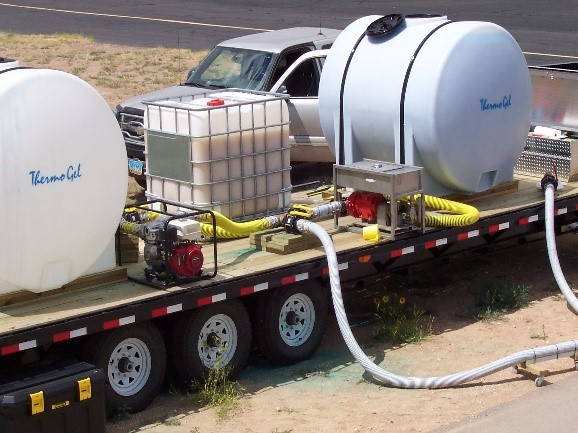
Use of wetting agent for more effective use of water as an extinguishing agent
An increase in the effectiveness of extinguishing is possible with the use of wetting agent added to the water, and in some cases it is also indicated, in particular when burning into the ground is taking place or a lot of dead wood is present. Wetting agent added to the extinguishing water reduces the surface tension and soaks much deeper into the substance on fire or the ash layer.
The foam agent industry has provided suitable foam agents for the field of forest and vegetation firefighting. According to the manufacturers' own statements, these foam agents are harmless to the environment when used as intended, and they are 100 % biodegradable. In addition to generating wetting agent for vegetation fires, they are also suitable for fighting Class A and B fires with wetting agent and/or foam. The proportioning rates vary greatly; and these in turn have a significant impact on logistics and effectiveness at lower proportioning rates.
Electronic pressure proportioning systems
Today, there is a large number of pressure proportioning systems on the market, which are permanently installed in fire trucks and are driven by the 24V on-board voltage of the vehicles. These systems have become established in the vehicles, also because of the DIN 14430 pressure proportioning systems. These electronic proportioning systems are now comparatively inexpensive to purchase. However, a look at the technical data and the corresponding working diagrams reveals that the proportioning and working range is limited. The generation of foam with a foam pipe of 400 l/min flow and a 1% or 3% proportioning rate is no problem for all pressure proportioning systems.
The situation is different for the generation of wetting agent with only a low extinguishing agent output. A guaranteed and constant proportioning of foam concentrate for the generation of wetting agent in the range of 0.1% to 0.3% can only be ensured by most electronic proportioning pumps from a water delivery of at least 100 l/min and more. In the case of interval extinguishing by repeatedly opening and closing the jet pipes, deviations in proportioning can occur, which then leads to "overdosing" of the mixture. The electronic systems are adjusted to the water flow by a measuring section (inductive measurement of the flow rate). Due to the fluctuating delivery of extinguishing water, the dosage is not exact and for a certain period of time no wetting agent is produced, but foam.
Wildfire risk development over the recent years
2018
- Sweden's worst forest fires in more than 100 years destroy more than 25,000 hectares.
- In Germany, 1,708 forest fires were reported, more than four times as many as in the previous year.
2019
- Eastern Australia is literally on fire in the 2019/2020 fire season. The bushfires extend over an area of around 126,000 km².
- Due to unusually high summer temperatures, large vegetation fires also occur in Siberia for the first time.
2020
- In the western United States, particularly in the states of California, Washington and Oregon, some of the most severe and longest wildfires in U.S. history are raging.
- In April, a vegetation fire breaks out in the exclusion zone of the damaged nuclear power plant at Chernobyl nuclear power plant. In addition to the "normal" hazards, such as fire and smoke, radioactivity poses another problem. Fortunately, in this case, nature comes to the rescue.
2021
- Devastating fires spread across the Mediterranean, the U.S., Canada and Siberia, destroying many millions of hectares of forest. Fires are even burning at the Arctic Circle. In Germany, the risk of forest fires is increasing, especially in the federal land of Brandenburg.
2022
- A new record year in terms of forest fires. The biggest fires occur in Yosemite National Park in the USA, on the island of Lesbos, and in numerous countries in southern Europe. In Germany, the regions of Saxon Switzerland and Brandenburg are most affected.
2023
- The 2023 forest fire season was severe globally. Canada faced its worst year on record, with approximately 9.5 million hectares burned. Overall, tree losses caused by forest fires increased by 24% worldwide in 2023 compared to the previous year. In Europe, the Mediterranean region, including Greece, Italy, and Spain, was particularly hard hit.
Mechanical pressure proportioning systems
Purely mechanical systems represent an alternative to electronic pressure proportioners. The foam pump is not driven by a 24V electric drive, but by the discharged extinguishing water. This water flows through a closed water motor with a turbine wheel (the principle is similar to the mill wheel in a water mill). This turbine wheel in turn drives the foam pump, e.g., in the form of a piston pump. The system (drive turbine and foam pump) is thus purely mechanical and the proportioning of wetting agent is always automatically controlled as a direct function of the volumetric flow rate.
The foam agent is thus added in exact proportion to the water flow. This means that the turbine wheel in the water motor turns faster or slower depending on how large or small the water flow rate is. Accordingly, more or less foam agent is added by the foam agent / proportioning pump. Overdosing is not possible.
This results in the following operational advantages for the application in vegetation firefighting:
- Purely mechanically driven pressure proportioning systems do not require any external power.
- Thus, they are not only suitable for vehicles, but can also be used independently, e.g., on a roll-off container, trailer or mobile in connection with a portable fire pump.
- Depending on the size, the unit can be comfortably carried to the scene by firefighters.
- Large hose distances can be overcome without the water/foam premix segregating.
- Loading on carts, roll-off containers or even trailers is possible without any problems.
A useful field of application for mobile systems is the filling of external fire-fighting water tanks for helicopters. In some cases, these tanks are partially filled by ground personnel if the approach to the next suitable water intake point is too far. Here, too, it makes sense to add wetting agent or gel to the water to achieve a better extinguishing result. If necessary, a dye can also be added to mark drop zones. This task is much more complicated or even impossible with conventional pressure proportioning systems. Incidentally, the turbine proportioning systems described above were developed for the chemical industry, where very precise proportioning, sometimes of several media at the same time, is very important.
PORTABLE PRESSURE PROPORTIONER FOR THE PRODUCTION OF WETTING AGENT
The DZ1000 portable pressure proportioner and the new DZ1000 light were specially developed for varying extinguishing scenarios and offer maximum flexibility in mobile use. Both proportioning systems are of purely mechanical design and guarantee precise proportioning of the foam agent over the entire operating range from 140 l/min to 1000 l/min. The proportioning rates of 3%, 1% and 0.3% (DZ1000) and 1% and 0,1% (DZ1000 light) can be easily switched during operation. Wetting agent is already generated from a flow rate of 90 l/min, with the new DZ1000 light even starting at 70 l/min.
- For all types of jet pipes – regardless of their height difference – e.g., when used on turntable ladders
- Ideal for the pulsating/intermittent extinguishing method
- Suitable for extinguishing foam and wetting agent
- The DZ1000 light also impresses with its low weight: at just under 25 kg, it can even be carried by a single person.
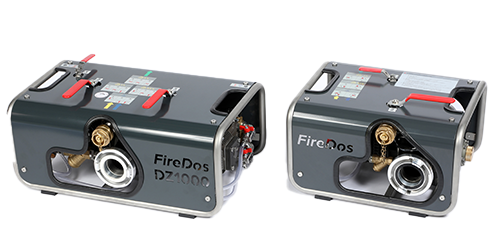
Portable foam proportioning systems DZ1000 und DZ1000 light
DZ1000 light in action during a forest exercise
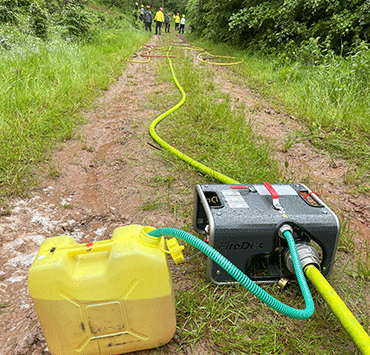
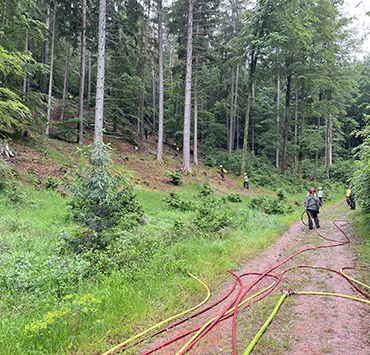
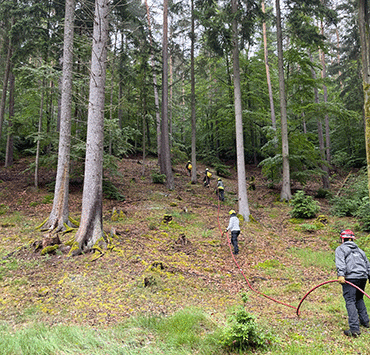
Forest fire exercise 2024 with the DZ1000 Light: The DZ1000 Light proportioning system demonstrated its effectiveness with an 80-meter height difference, handling a 100 l/min output at the nozzle while being connected to a 200-meter D-line.
What can we as individuals do to prevent forest and vegetation fires?
Preventing forest fires begins with each individual’s responsible actions. Careless handling of fire can lead to devastating consequences. For instance, in 2023, an improperly discarded cigarette ignited poplar seeds and resulted in a 50-hectare forest fire near Saarbrücken, Germany.
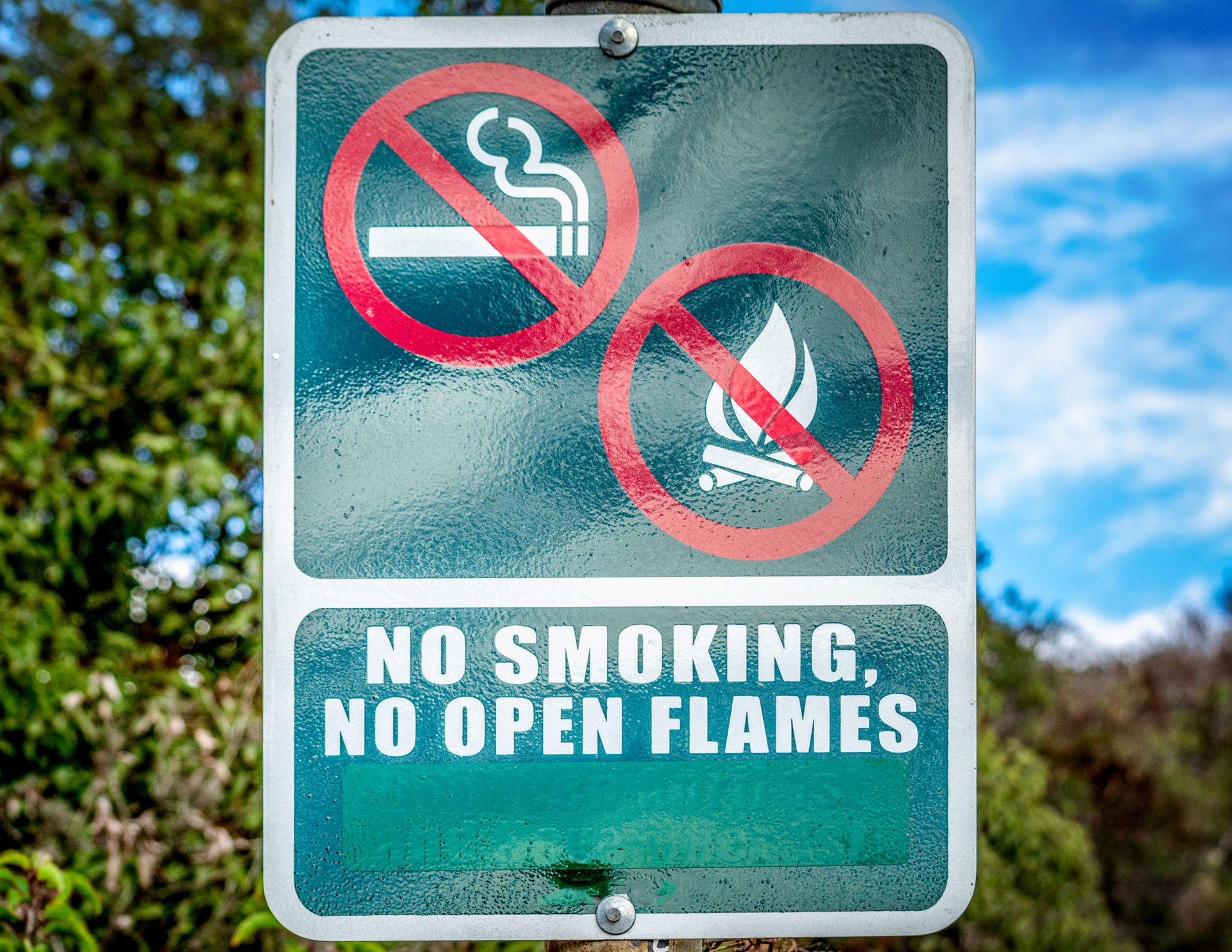
Image by Gabriele Maltinti / Shutterstock
Code of conduct for preventing wildfires:
- Be Cautious with Fire: Avoid lighting open fires, including campfires and barbecues, in or near forests unless it is explicitly permitted and safe to do so.
- Dispose of Cigarettes Properly: Never discard cigarettes or other burning materials carelessly, especially from a car or in wooded areas.
- Report Risks: Immediately report any suspicious smoke or illegal fires to the authorities.
- Respect Fire-Free Zones: Follow notices and prohibitions related to fires and smoking in high-risk areas.
- Be Mindful During Outdoor Activities: When camping or hiking, ensure all fires are completely extinguished and that no sparks or embers are left behind.
Conclusion
The rising number of forest and vegetation fires demands increasingly effective extinguishing methods. Fighting forest fires effectively depends on the right technology. By using wetting agent, water can be used more economically and effectively as an extinguishing agent in many cases. Compared to electrically driven pressure proportioners, mechanical systems offer some advantages not only for this application.
this might also be of interest for you:
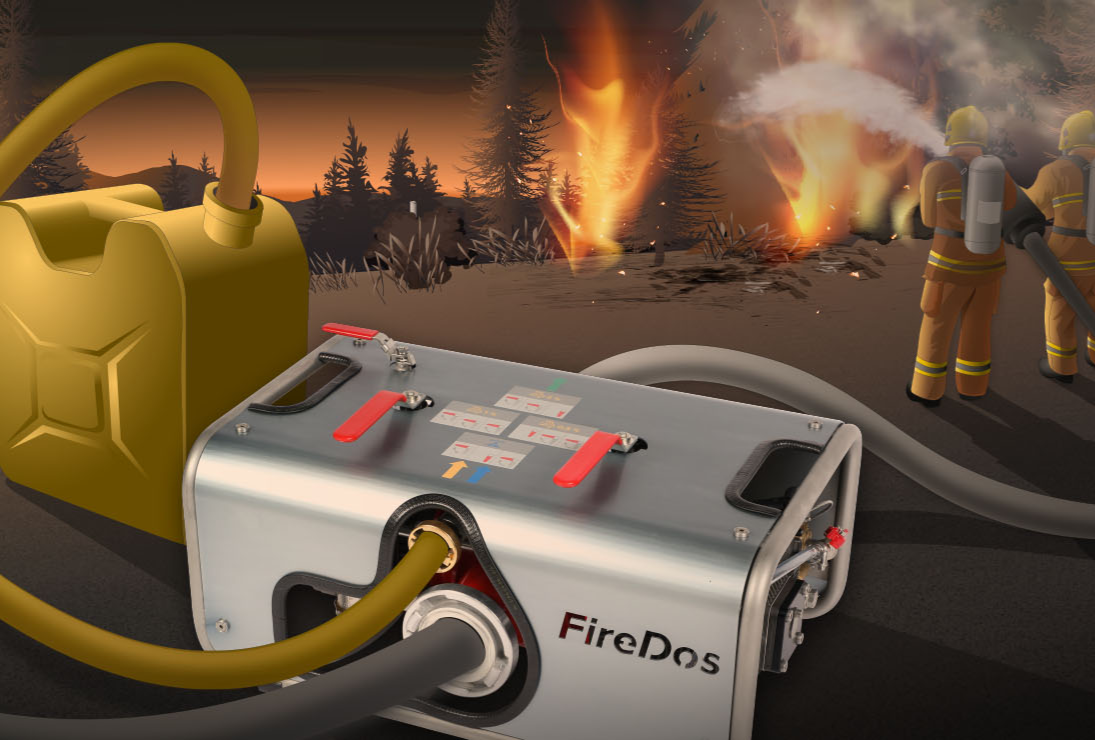
Portable proportioners for fire brigades
Maximum flexibility in mobile use
View more
What is wetting agent?
Wetting agent penetrates deeper into the fuel. Read about what to consider.
View more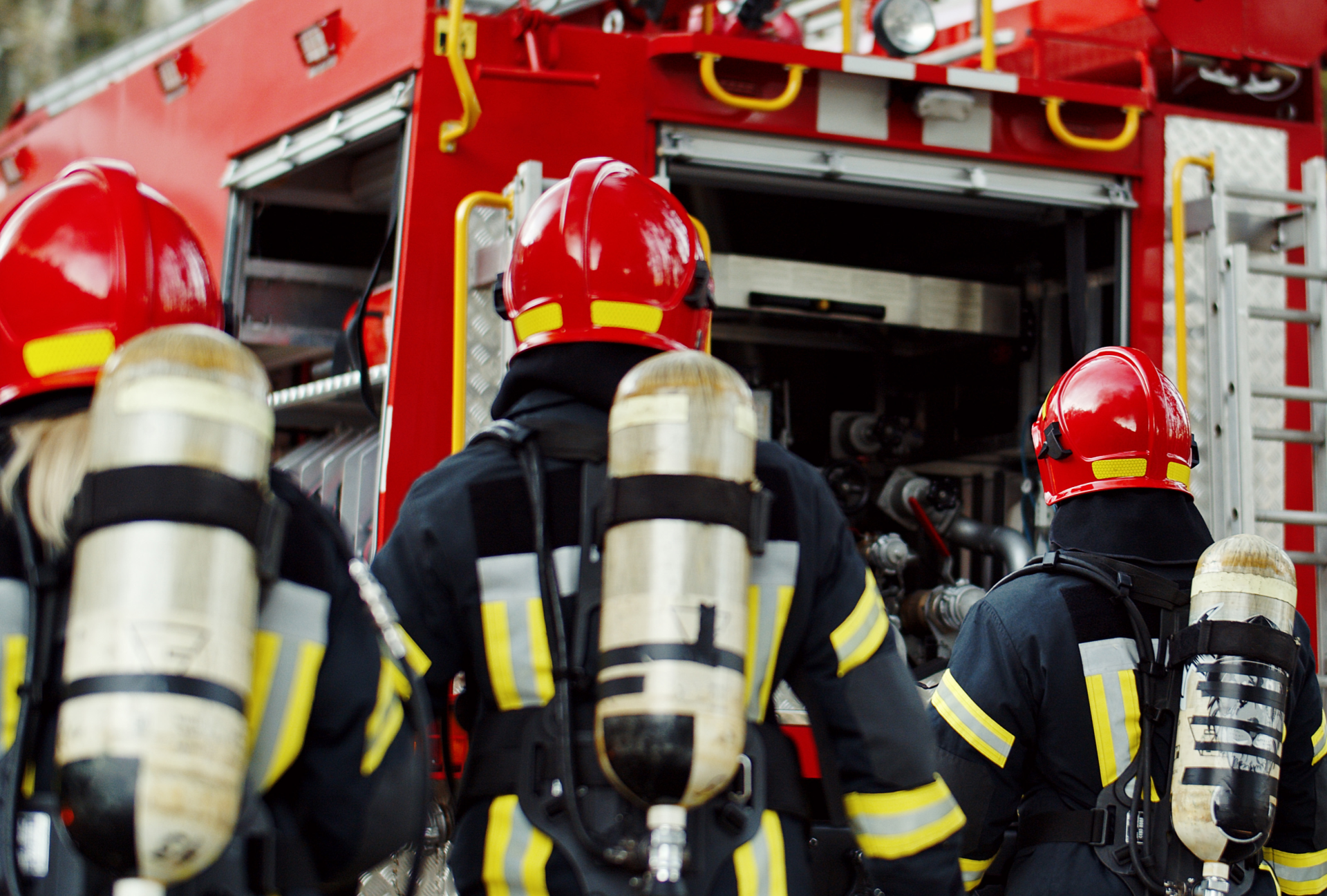
Our solutions for fire brigades
Reliable and versatile firefighting technology, when every second matters.
View more